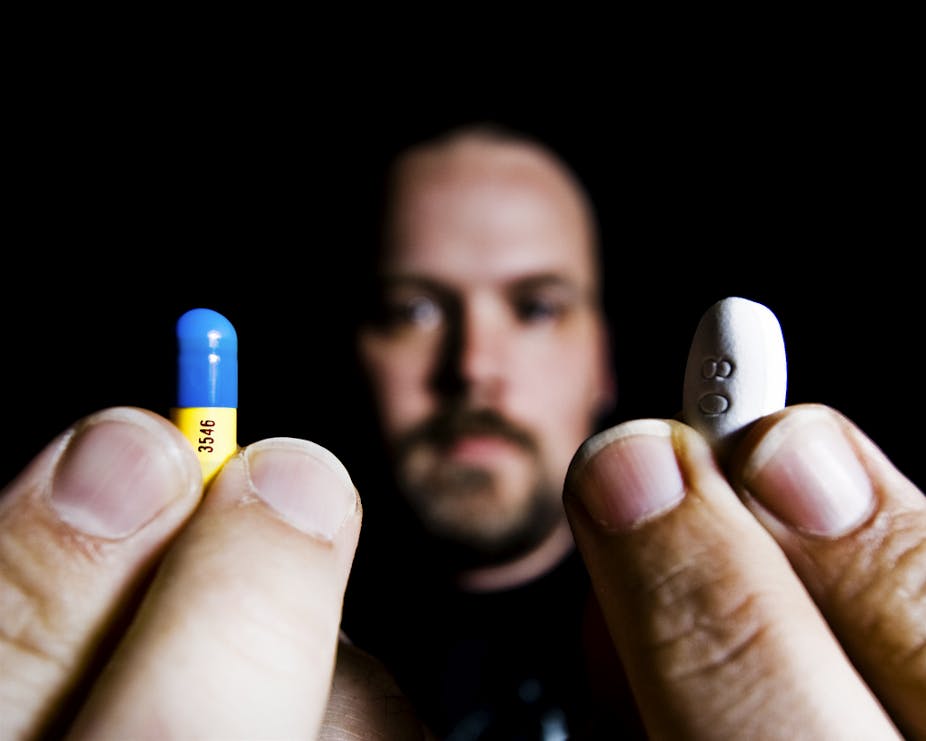The Administrative Appeals Tribunal has granted pharmaceutical company Aspen Pharmacare a legal stay against the Therapeutic Goods Administration’s (TGA) ban on some of its products.
The company took the action after the TGA ordered the deregistration of a group of drugs with the base ingredient dextropropoxyphene (DPP): Di-Gesic, Doloxene, Paradex and Capadex.
Professor and hospital pharmacist Andrew Somogyi spoke to us about dextropropoxyphene and the broader implications the legal proceedings.
What is dextropropoxyphene (DPP)?
Dextropropoxyphene is an opioid drug chemically similar to methadone, but dissimilar to morphine. It’s a lot less potent than morphine and so is classed as being a relatively weak opioid drug.
Who is the drug for?
The TGA had approved it for mild-to-moderate pain, which is usually the result of acute pain from surgery. It’s also used to treat chronic pain.
I’m a pharmacist and I was dispensing huge amounts of it in the early 1970s. So, I suspect it was approved mid to late 1960s.
In Australia, DPP can be prescribed by itself (DDP only) but in the majority of prescriptions, it’s combined with paracetamol (DPP and paracetamol).
Figures from the Pharmaceutical Benefits Scheme (PBS) show that there were something like 500,000 prescriptions written in 2009 for the combination of DPP and paracetamol. And there were 21,000 prescriptions of DPP only, costing almost A$500,000 through the PBS.
Is it an effective pain reliever?
From a pharmacology perspective, which means examining how tightly the drug binds to the pain target (the receptor in the brain where opioid drugs act to relieve pain), it’s very poor.
DPP binds to the receptor (pain target) less than 10% of what morphine does, which means it’s a weak opioid compared with morphine.
Clinical studies on effectiveness have basically shown that DPP together with paracetamol are no more effective than paracetamol alone for acute pain. So the evidence about its effectiveness is basically that it’s not any more effective than paracetamol and it’s considerably more toxic.
Why was it banned?
It was banned because its benefit-to-harm balance was not in favour of the drug. It’s no more beneficial than paracetamol and its harms were substantial because of certain effects on the heart. The body breaks down DPP in the liver and one of its major breakdown by-products has adverse effects on the heart. It causes abnormal rhythms that can, in fact, lead to death.
The drug was a lot more toxic to the heart in the elderly because they were not able to remove the drug and its breakdown product as rapidly as younger people, so it would accumulate in their bodies. And in the United Kingdom, in particular, the drug was the major cause of drug-induced overdoses in the 1980s.
Aside from these kinds of harms, the drug can also interact with many other medications by blocking their breakdown. These interactions with other medications patients are on (such as antidepressants) can also cause harm.
The drug is banned in the United States, Europe and New Zealand. Do you think it was a sensible decision by the TGA to ban it?
Yes, because we have much more effective and safer analgesic drugs.
There are some people who have been on this medication for many years and may be dependent on it. Getting them off it may be a problem but we now have very good drug addiction and drug dependence units in hospitals and elsewhere that can deal with those types of issues.
Should the TGA’s decision be allowed to be overturned?
Certainly, the scientific evidence for deregistration can’t be argued against. I think the TGA is on pretty good grounds to convince the tribunal that this is a public health issue and there are much better and safer medicines for the indications that the drug was initially approved on.

